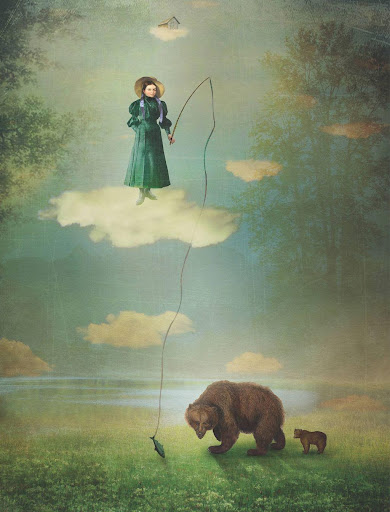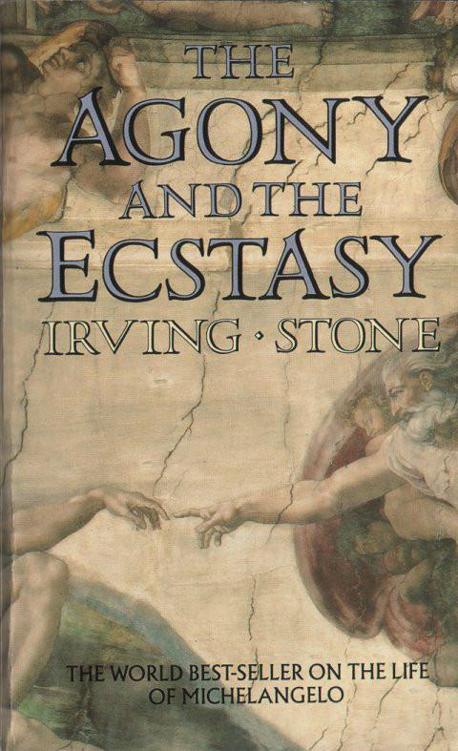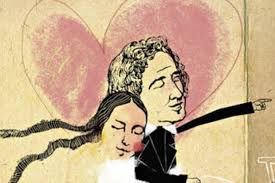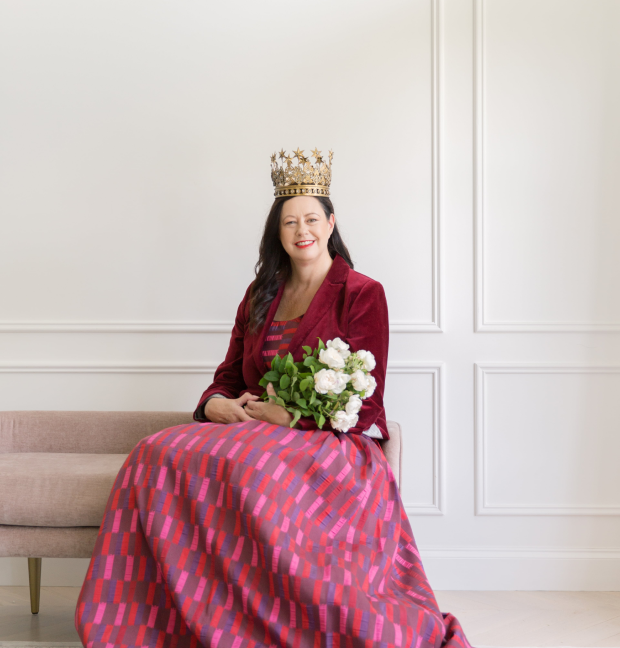There could be few people left on the face of this planet who have not heard of Harry Potter. You know, the one that has had kids camping outside bookshops all night. The one that has made sardine-flavoured jelly beans fashionable.
Maybe, if you’d been in a contemplation retreat for the past four years, you might have missed the commotion. Or lost in the Amazon jungle without a radio. Otherwise I can confidently say you know all about the Harry Potter Phenomenon. Forty million copies sold in 33 different languages, and counting. Hollywood hullabaloos over who gets to play the earnest young wizard with the lightning bolt on his forehead (last rumour has Errol Flynn’s grandson, Sean Flynn Amir, pegged to grab it). Single mum Joanne Rowling threatening to knock the Queen off her long-held perch as the richest woman in Britain. Harry Potter dolls, mugs, toothbrushes, socks and jellybeans all in production.
What you may have missed is the growing backlash against Pottermania. At the moment it is still low-key. Mutterings of middle-class bias. Fuming by feminists that Harry is not Harriet. Banning of the book by Bible-bashers. One critic described the hype ahead of the release of the fourth book as being “worthy of a Wonderbra.” Another has described them as ‘marginally less testing than watching Neighbours.’ That critic, Whitbread book judge Anthony Holden, went on to call Rowlings’ books “essentially patronising, very conservative, highly derivative (and) dispiritingly nostalgic.”
I would have said exuberantly nostalgic. For therein lies the secret of Rowling’s success. It should be no surprise that her books have proved as hugely popular with adults as they have with children. For decades the literary establishment has been blaming TV, video games, the Internet, MTV and Macdonald’s for the demise of reading in the young and not-so-young. Few have wondered whether the reason reading has gone out of fashion is because the books published have simply not been what anyone wants to read.
To me, the Harry Potter books have all the verve and wit and excitement of the books I loved to read as a child – and still read today when I’m tired or sick or studying for exams, when I feel in need of sinking myself in the guilty, sensuous pleasure of reading for the pure joy of reading. And though Rowling has been compared with C.S. Lewis, Roald Dahl and Edith Nesbit, the author she reminds me of most is the author I loved most passionately as an eight year old. Enid Blyton.
The first story I ever wrote was about a brother and sister who fell down a hole into Fairyland. It was unashamedly influenced by Blyton’s The Magic Faraway Tree. I was six years old. A year or so later I attempted my first novel. It was entitled Runaway and was about a brother and sister who run away from their cruel aunt and uncle, at last finding a happy home with their nice auntie after enduring all sorts of adventures. Coincidentally, the plot synopsis sounds remarkably like that of Blyton’s first book, The Secret Island (1938).
For quite a few years, nothing gave me such a thrill as being given a new Famous Five book to read. Since there were 21 in the Famous Five series, my family found buying me Christmas and birthday presents very easy. I daydreamed about exploring secret passages, thwarting smugglers, discovering buried treasure and having a dog called Timmy.
My sister and I used to fight over who would get to be George, the girl-who-was-as-good-as-a-boy, in our never-ending Famous Five games. Since she was bigger than me, my sister always won. I had to be timid Anne who liked to play with dolls.
When I imagined my life as a grown-up, I modelled my daydreams on Blyton’s The Story Of My Life, which had belonged to my mother when she was a child. Blyton described her life in idyllic terms. She lived in a big old house in the country with a huge garden filled with flowers and lots of animals and two sweet-faced children of her own and a vague sort of husband floating around. She never mentioned her bitter divorce, perennial problems with the plumbing or the time her house was invaded by hundreds of rats – just like Julian never got a pimple or George never experienced her first menstrual cramp. I wanted desperately to be a writer living in a big old house in the country too – and I have to admit my ambitions have not changed much since I was eight.
Confessing to all this is actually very hard. Enid Blyton has been sneered at for so many years. One critic described her as “slow poison”; another said her language was “colourless, dead and totally undemanding.”
The first shot in the anti-Blyton campaign was fired by Geoffrey Trease in 1949 with the comment “The Blyton school stories entertain but … can hardly be said to go far in depicting reality, stimulating the imagination or educating the emotions. Their style (is) drained of all difficulty until it achieves a kind of aesthetic anaemia.” In other words, “marginally less testing than watching Neighbours.”
Geoffrey Trease’s 1949 book, Tales Out of School, was the first ever critical analysis of British children’s literature and it was to prove highly influential over the next half a century. In this seminal work, he placed great emphasis on the need for children’s books to “represent reality.”
This was to become the rallying cry for critics, librarians, and literary academics everywhere – and not just in relation to children’s books. This was the age when ‘angry young men’ dominated the world stage. There was no room for whimsy and wonder, frivolity or fancy. No room for illicit midnight feasts in the dormitory or hunting for treasure in secret passages. No room for a world where gangs of children outwitted gangs of baddies without the unwelcome interference of bumbling grown-ups. No room for wishing-chairs or flying broomsticks or animals that could speak or wardrobes that led into magical lands.
In December 1975, the Times Literary Supplement wrote “the past fifteen years has seen a turgid wave of problem books, bombarding children with facts on abortion, menstruation, racism, mental and physical handicaps, divorce, adolescent hang-ups, violence, religion and so forth. No area has remained sacred; but style, imagination and storytelling have too often been sacrificed to the golden calf of truth.”
Twenty-five years after that review and fifty years after Geoffrey Trease first cast Enid Blyton, C.S. Lewis, Edith Nesbit and other popular children’s writers out into the arctic circle of academic scorn, Harry Potter has taken over the world. J.K. Rowling had the good luck to sit down and write her fantastical, whimsical adventure stories at a time when the world was hungry for kiddies’ books like you used to get. Of course, she had some trouble convincing the literary establishment of that. Harry Potter and the Philosopher’s Stone, the first in the series, was rejected by every single publisher in the UK before at last being picked up by Bloomsbury. It now accounts for more than 20 per cent of that publisher’s turnover and all the other publishers in the world are now clamouring for books about boy wizards, grumpy owls, chambers of secrets and boarding school capers.
What is most interesting is that this enthusiastic embracing of the unrealistic comes at a time when the almost universal derision towards Enid Blyton is being replaced with a new degree of critical and popular interest.
Hugh Grant recently named The Naughtiest Girl In the School as his favourite book of all time, and it was widely reported that Liz Hurley sought refuge in her own Blyton collection after his infamous encounter with a black prostitute. Writers who have unashamedly acknowledged their early love of Blyton include Melvyn Bragg, Beryl Bainbridge, Ken Follett, Hanif Kureishi, and Booker Prize winner Keri Hulme (who, much like me, wrote a Enid Blyton rip-off called ‘The Cave of Adventure’ at the age of seven).
Blyton’s own life has been a source of continual fascination, perhaps because she so unfailingly represented it as bathed in perpetual sunshine. The Channel Four series Secret Lives recently probed the dark, secret shadows of her life with great relish - Blyton’s frigid relations with her own family, her affairs and bitter divorce, her intense friendship with Dorothy Richards (Bi Women On the Web, a resource page for bisexual women, lists Enid Blyton as one of its heroines, along with Josephine Baker, Simone de Beauvoir and Sandra Bernhard).
Most tellingly, Blyton has finally been the subject of an in-depth critical analysis, published last month in the UK as Enid Blyton and the Mystery of Children’s Literature. David Rudd, a senior lecturer at Bolton Institute, has examined the life and work of Blyton, with particular emphasis on the fact that, despite the storm of adult negativity, Blyton remains the most popular children’s author ever. To date, her books have sold over 300 million copies and are still selling strongly. They have been made into TV series, feature films, radio plays, stage plays, fun parks, animated cartoons, and puppet shows. They have never gone out of print and 32 years after her death, Enid Blyton is still chosen by children as one of their all-time favourite authors.
“Why does a writer accused of being … middle-class, snobbish, sexist, racist … continue to fascinate in our multicultural world? To fascinate not only in France, Germany and Australia, but also in Malaysia, Russia and Japan, and in languages such as Catalan and Tamil?’ Rudd asks.
To begin with, Rudd examines the primary criticisms of Blyton’s work and concludes that many “are based on glaring misreadings, sometimes not even drawing on Blyton’s own original texts.”
The accusation of sexism, for example, is one that has always troubled me. Of all the thousands of books I read as a child, it is George of the Famous Five that remains most vivid in my memory - the tomboy who refused to let the boys push her around, the girl who could out-swim, out-climb and out-wit anyone. The critic Bob Dixon has described George as “a very bad case of … penis-envy’, yet she was a powerful role-model for literally millions of young girls.
Blyton’s books are filled with passionate, independent girls who fight desperately against being straitjacketed in normal gender roles. Even Anne, normally dismissed as the typical domesticated female, has her own power, which often takes her brothers by surprise. And as Rudd points out, without the contrast of Anne, George’s behaviour would not appear half so subversive.
Noddy, once Blyton’s most popular and celebrated creation, was singled out for the most venom. One critic of the early ‘60s called him “the most egocentric, joyless, snivelling and pious anti-hero in the history of British fiction.” Noddy books were banned for many years, primarily because of the racial implications of their naughty golliwogs. Blyton herself protested that she depicted more bad teddies than golliwogs and statistically she was right. A close examination of the Noddy books shows that the poor maligned golliwogs were wicked in only one story, out of 24 books in total, with the real villains more likely to be monkeys or goblins.
In the sanitised, homogenised versions of the books on sale now, the golliwogs have been replaced by slit-eyed goblins. Noddy and Big Ears, who once liked to share a bed, now live in separate establishments and Noddy no longer feels himself “coming over all queer.” The BBC, producer of the hugely popular animated TV series, has introduced a number of new characters, among them Dinah Doll, who it describes as a “black, assertive, ethnic minority female.”
In spite of the controversy, Noddy has continued to be hugely popular with the very young. In the 50 years since he sprang to life in Enid Blyton’s fertile imagination, the Noddy books have sold more than 200 million copies in 27 different languages, with spinoffs including toys, clothing and CD-ROMs generating annual sales of more than $80 million in Britain alone. In the US, the Noddy series is now more popular than Sesame Street. No wonder he was asked to ring the bell to launch the day’s trading at the New York Stock Exchange earlier this year!
Most interestingly, Rudd places Blyton strongly within the Homeric tradition of oral storytelling, where the audience is spellbound by the visual, sensual aspects of the tales, their sense of immediacy, their affinity with the natural daydreams of the powerless, who long to be heroes. What is most interesting about Rudd’s analysis is his comparison of this oral tradition with the literary tradition, and how contempt for the more intuitive, spontaneous and simplistic oral tradition reaches as far back as Plato.
In The Republic, Plato criticises Homer’s work for being, at best, frivolous and at worst, dangerous. He sees it as a ‘crippling of the mind’, a ‘species of mental poison and an enemy of the truth.’ Sounds eerily familiar, doesn’t it?
One of the primary causes for concern for many critics was the sheer volume of Blyton’s work. She was the most prolific author of all time, writing 700 books, 10,000 short stories and hundreds of magazine article and columns. She could write up to 10,000 words in a day. This meant she could write a Famous Five adventure in a week.
Many worried that once a child became addicted to Blyton, he or she would read nothing else until they progressed - “if ever, on such a spoon-fed diet” as one critic despaired - to adult literature. However, all the evidence goes to show that children who are given the gift of reading for pleasure read voraciously. They read everything they can lay their grubby little mitts on. They read all their lives.
The fact is Blyton was a wonderful storyteller, with a wonderful knack of knowing just what it is children like in books. Her first ever review, for the book of poems Child Whispers (published in 1922 when she was just twenty-five and working as a nursery governess) celebrated her ability “to move into the child’s world of fancy”.
The psychologist Michael Woods wrote “she was a child, she thought as a child and she wrote as a child.” He did not mean it as a compliment. Nonetheless, it is a statement of profound truth and the greatest tribute any critic could give a writer for children.








